 |
||
|
||
| ||
We haven't reviewed Sapphire products for a long time already, although they appear on the market as if from the horn of plenty. Out of multiple usual HD 38xx graphics cards we've selected two products with different memory size and customized cooling systems. We must admit that reviewing graphics cards on AMD GPUs has become troublesome of late. If there are no problems with drivers in 3D rendering, such products demonstrate performance in between similar results of NVIDIA cards. It's rather difficult to compare. AMD has to constantly change prices, to keep up buyers interested in its products. And that might distort the conclusions in our RADEON reviews. For this reason we have to either be wordy in such reviews or, sometimes, skip conclusions at all, describing only prices. It's well known that the RADEON HD 3870 is generally outperformed by the GeForce 8800 GT. However, AMD is cutting down prices, so it's becoming hard to say which card is better. While the U.S. market is rather responsive to changes in pricing, our local Russian market may be more inert. So, the HD 3870 and the 8800 GT might still have similar retail prices, even though release prices may differ much. The HD 3850 is in a similar situation. The new GeForce 9600 GT had looked much better because of its price, but AMD cut prices down, so the 3850 should be between the 9600 and the 8600. However, since our market is inert and retail prices are strange to say the least, it's hard to say whether the 9600 is better or not. When a company loses its leadership in the segment of image products, it stumbles upon issues with product positioning. When ATI was the leader, everything was simple. But now it has to manufacture initially medium-performance cards and play with prices. However, this is a slippery parameter, which must be manipulated with caution. Thus, the price/performance ratio is prone to change, and we cannot say for sure which graphics card is definitely better or worse. Graphics Cards
Both graphics cards are apparently based on reference designs with minor changes that have to do with different memory types (DDR3/DDR4). On the whole, we didn't notice any significant simplifications that could deteriorate operating stability of the cards.
Both cards have TV-Out with a unique jack. You will need a special bundled adapter to output video to a TV-set via S-Video or RCA. You can read about the TV-Out in more detail here. Analog monitors with d-Sub (VGA) interface are connected with special DVI-to-d-Sub adapters. The bundle also includes DVI-to-HDMI adapters (these graphics cards support video/audio transfer to HDMI receivers), so there should be no problems with such monitors. Maximum resolutions and frequencies:
What concerns MPEG2 playback features (DVD-Video), we analyzed this issue in 2002. Little has changed since that time. CPU load during video playback on modern graphics cards does not exceed 25%. What concerns HDTV. You can read one review here. Both cards require additional power supply, so each card is bundled with an adapter from molex to 6-pin, even though all modern PSUs are equipped with these cables.
Now let's proceed to the cooling systems.
We monitored temperatures using RivaTuner (written by A.Nikolaychuk AKA Unwinder). Here are the results: Sapphire RADEON HD 3850 1024MB PCI-E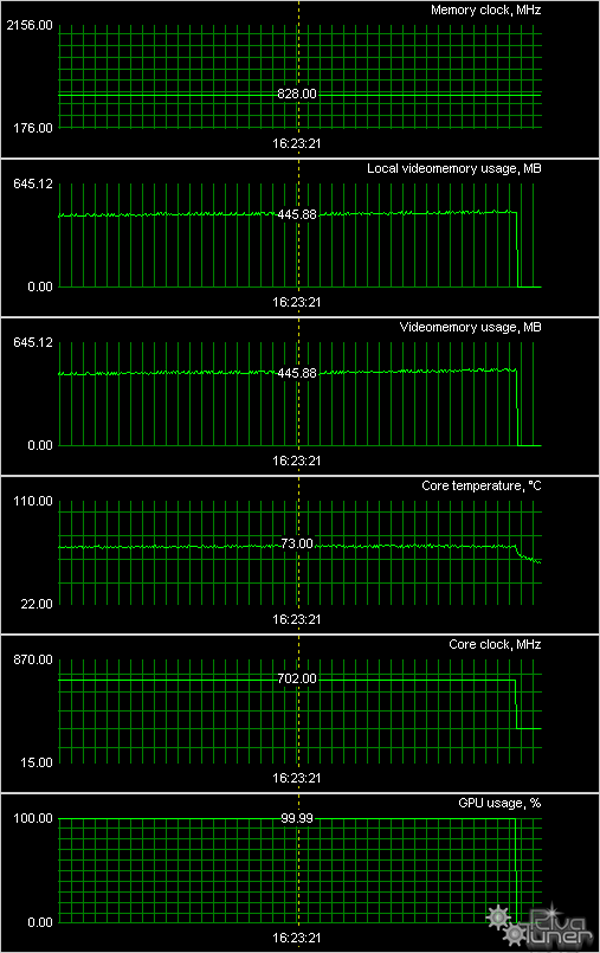 Sapphire RADEON HD 3870 Toxic 512MB PCI-E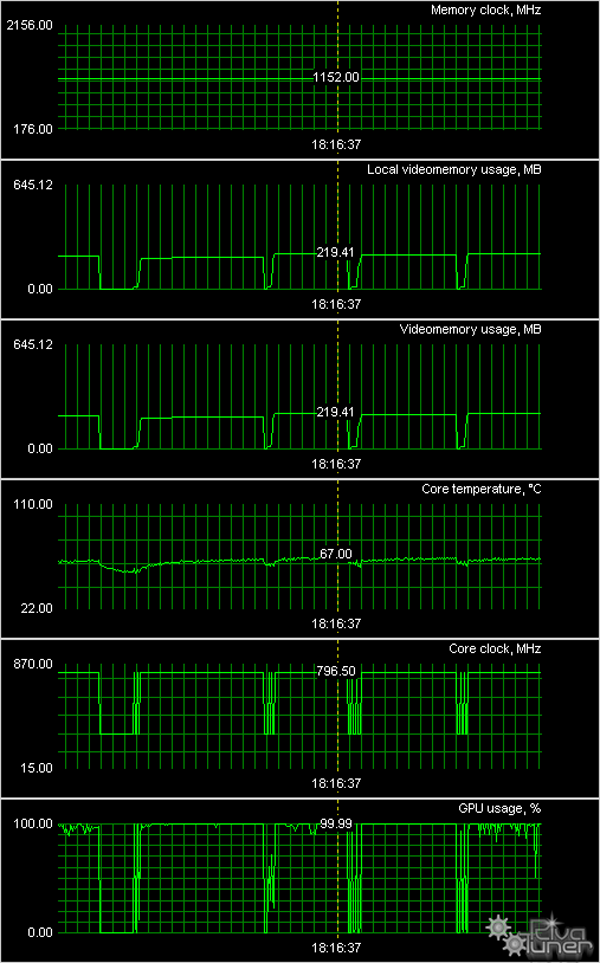
As we can see, both cooling systems have proved their efficiency even though both cards operate at increased frequencies. There is almost no noise. BundlesThe basic bundle should include: User's Manual, CD with drivers and utilities, a DVI-to-VGA adapter, a DVI-to-HMDI adapter, a CrossFire bridge, a component output adapter (TV-out), and an external power splitter. And now let's see what other accessories are bundled with each card. PackagesInstallation and DriversTestbed configuration:
BenchmarksWe used the following benchmarks:
Performance resultsIf you have a decent understanding of 3D graphics, you may draw your own conclusions for the charts below. However, if you are interested in our comments on test results, you may read them after each test. Anything that is important to beginners and those who are new to the world of graphics cards will be explained in detail in the comments. First of all, you should look through our reference materials on modern graphics cards and their GPUs. Be sure to note the operating frequencies, support for modern technologies (shaders), as well as the pipeline architecture. ATI RADEON X1300-1600-1800-1900 Reference If you have just begun realizing how large the selection to choose a graphics card is, don't worry, our 3D Graphics section offers articles about 3D basics (you will still have to understand them—when you run a game and open its options, you'll see such notions as textures, lighting, etc.) as well as new product reviews. We also publish monthly i3DSpeed that sums up all comparisons of graphics cards for various price ranges. Thirdly, have a look at the test results. We are not going to analyze each test in this article, primarily because for us it makes sense to draw a general bottom line in the end. We will, however, make sure that we make our readers aware of anything unusual. S.T.A.L.K.E.R.FPS CHARTS: S.T.A.L.K.E.R.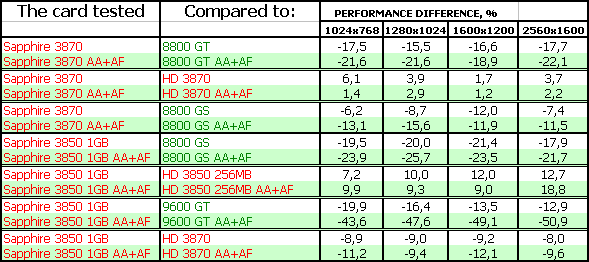 CRYSIS, Rescue, DX9, HighFPS CHARTS: CRYSIS, Rescue, DX9, High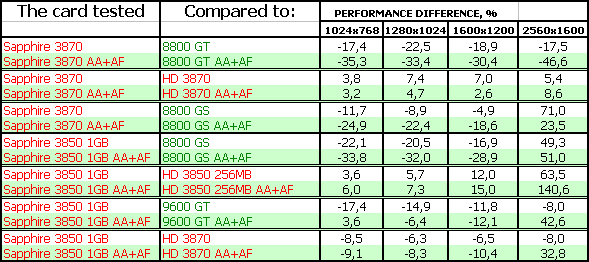 CRYSIS, Harbor, DX9, HighFPS CHARTS: CRYSIS, Harbor, DX9, High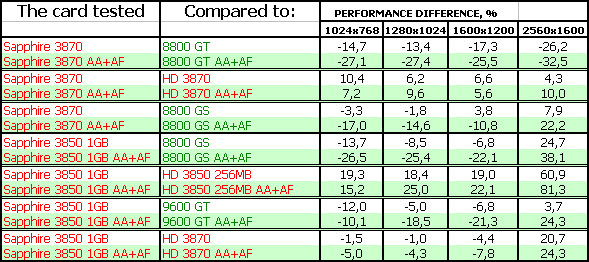 CRYSIS, Rescue, DX10, Very HighFPS CHARTS: CRYSIS, Rescue, DX10, Very High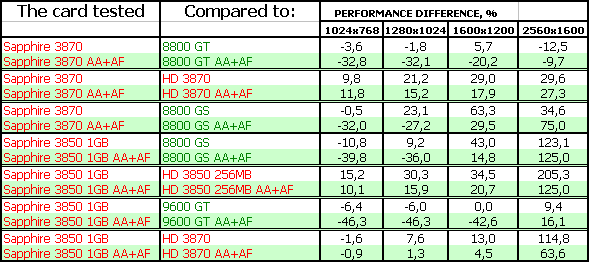 CRYSIS, Harbor, DX10, Very HighFPS CHARTS: CRYSIS, Harbor, DX10, Very High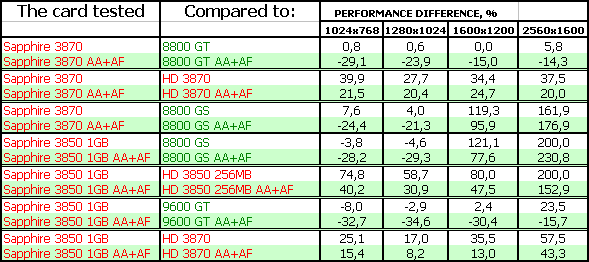 Call Of JuarezFPS CHARTS: CoJ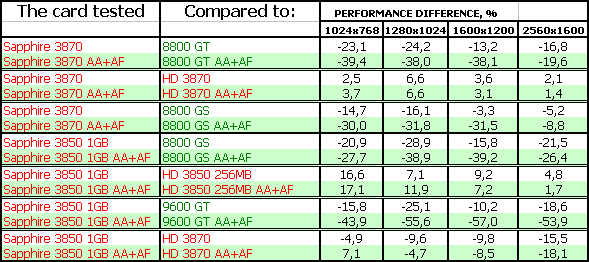 Company Of HeroesFPS CHARTS: CoH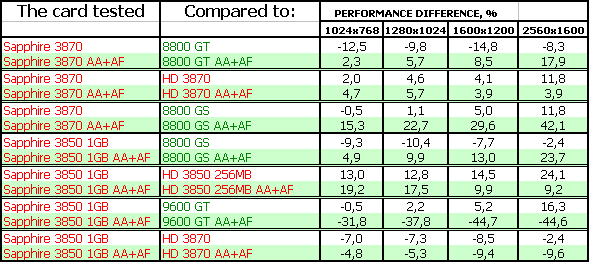 3DMark05: MARKSFPS CHARTS: 3DMark05 MARKS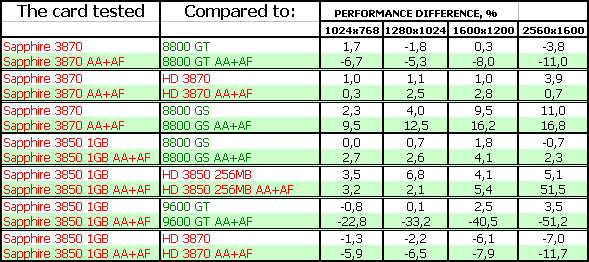 3DMark06: SHADER 2.0 MARKSFPS CHARTS: 3DMark06 SM2.0 MARKS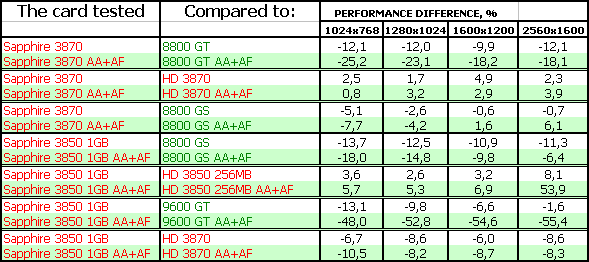 3DMark06: SHADER 3.0 MARKSFPS CHARTS: 3DMark06 SM3.0 MARKS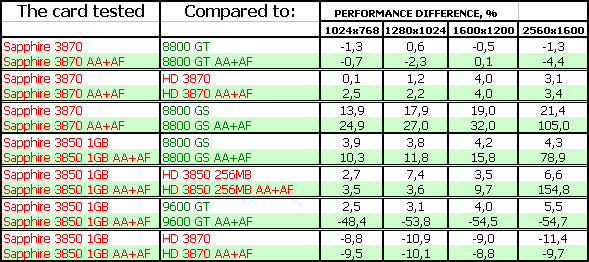 ConclusionsSapphire RADEON HD 3850 1024MB PCI-E is a very interesting graphics card. It's the first single-GPU graphics card with 1GB of video memory we've seen. Only dual-GPU cards used to have so much memory (either on a single or two PCBs). Tests have demonstrated that such a card does not need so much memory. If a gamer wants to use maximum settings in games, he/she will be forced to limit the resolution to 1024x768 or a tad higher. In this case, so much memory will be of little use. We may even say that it will be useless. It's also strange to see the card use very fast memory chips that can operate at 1000 MHz, while the card uses them at 830 MHz. I think that the cooling system can easily cope with such memory operating at its nominal frequency. Only the manufacturer knows the reasons why it was done. If this card's cost is not much higher than the general price tag for the 3850 cards, this product will be very interesting. But I repeat that such cards do fine with 512MB of video memory.
Sapphire RADEON HD 3870 Toxic 512MB PCI-E is actually the most powerful single-GPU graphics card based on the AMD GPU. To be more exact, it's one of the most powerful cards, because there is also a card from HIS operating at higher frequencies. It has a good design with a quiet cooling system. It's a matter of preference whether you should choose a single-slot cooler, which cannot throw the hot air out of a PC case. The cooler copes with its task well, but I cannot tell you whether ejecting hot air out of a PC case is really mandatory. If a noiseless dual-slot cooling system is used, then the answer is "yes". And if it's noisy, there is no point in using it. On the whole, the card offers increased operating frequencies and a good cooling system. But you should consider the situation with prices again. Our tests proved that the 3870 family is generally outperformed by the 8800 GT. So if you find the latter cheaper than the 3870, you don't hesitate and buy it. The 8800 GT, of course. But if prices are adequate to performance... Then it's a difficult question. And another thing that we are not tired to repeat from article to article. Having decided to choose a graphics card by yourself, you have to realize you're to change one of the fundamental PC parts, which might require additional tuning to improve performance or enable some qualitative features. This is not a finished product, but a component part. So, you must understand that in order to get the most from a new graphics card, you will have to acquire some basic knowledge of 3D graphics and graphics in general. If you are not ready for this, you should not perform upgrades by yourself. In this case it would be better to purchase a ready chassis with preset software (along with vendor's technical support,) or a gaming console that doesn't require any adjustments. To find more information regarding the current graphics card market and the performance of various cards, feel free to read our monthly special i3DSpeed. Both the Sapphire RADEON HD 3870 Toxic 512MB and Sapphire RADEON HD 3850 1024MB get the Original Design Award: 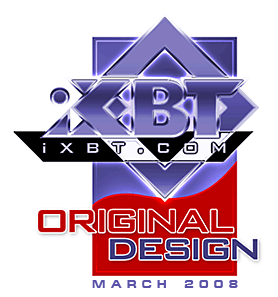 We express our gratitude to
Sapphire and Constantine Martynenko for the provided graphics cards. PSU provided by TAGAN, Monitor provided by NVIDIA. Andrey Vorobiev (anvakams@ixbt.com) March 17, 2008 Write a comment below. No registration needed!
|
Platform · Video · Multimedia · Mobile · Other || About us & Privacy policy · Twitter · Facebook Copyright © Byrds Research & Publishing, Ltd., 1997–2011. All rights reserved. | |||||||||||||||||||||||||||||||||||||||||||||||||||||||||||||||||